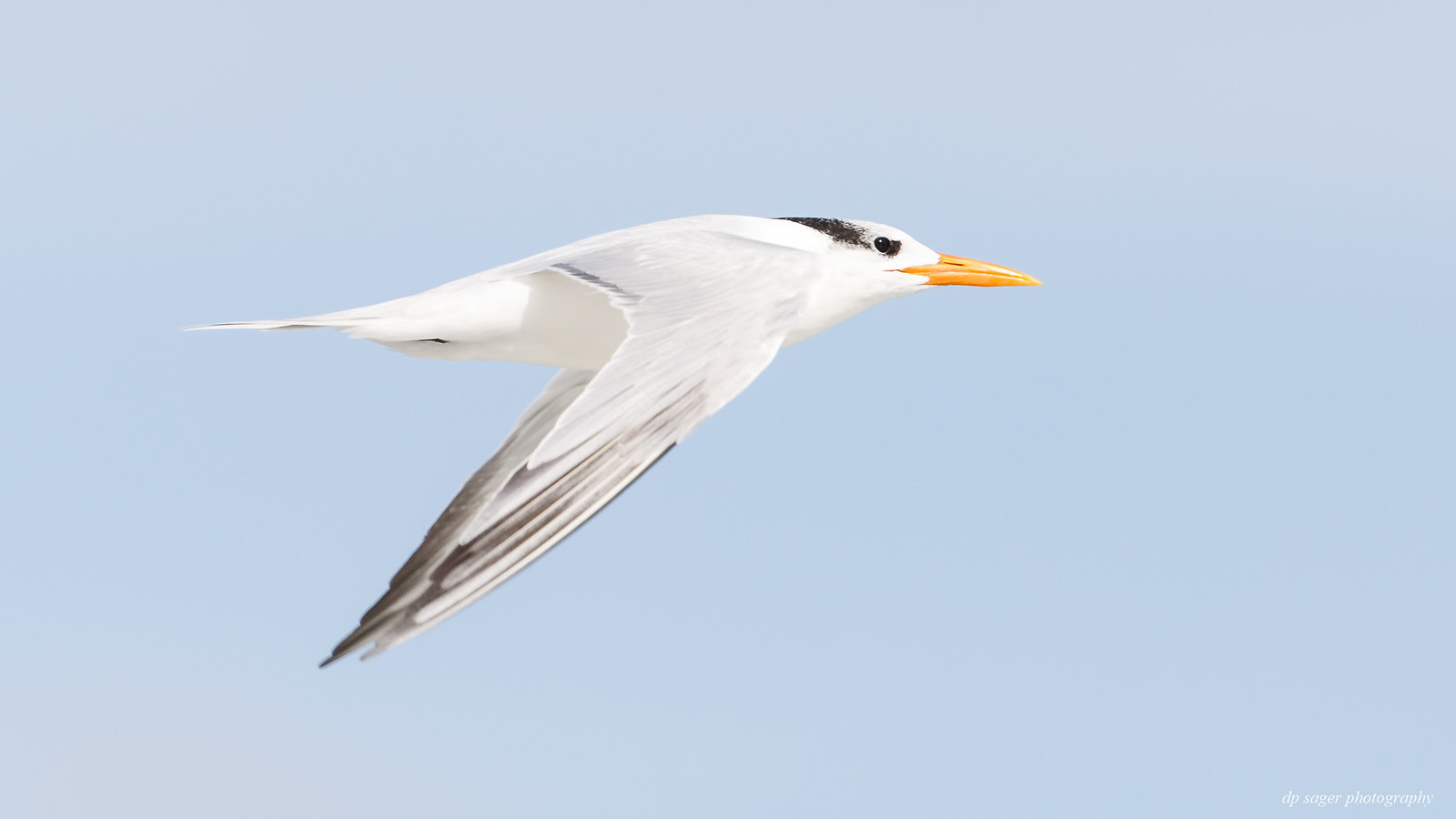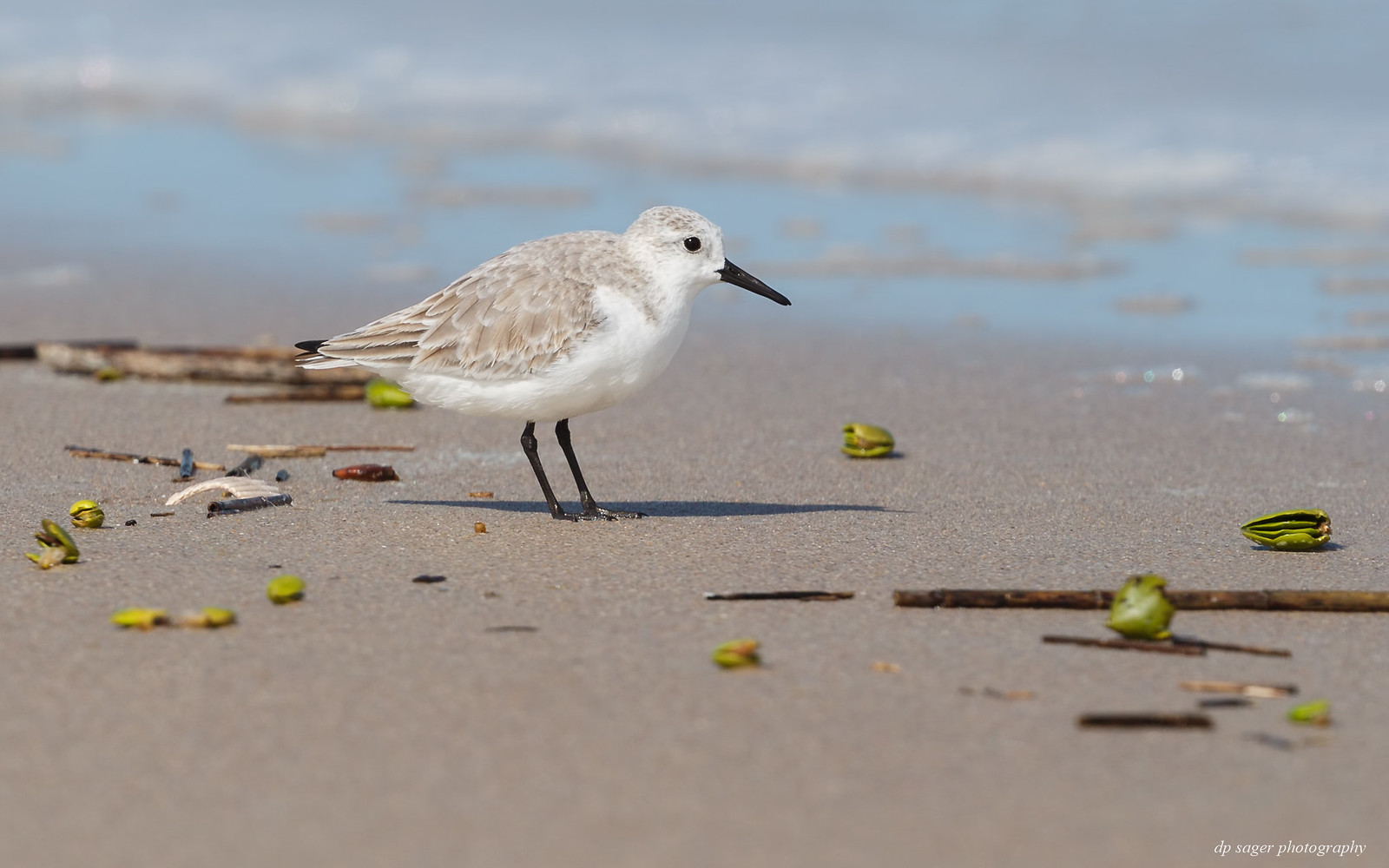Shore birds in the subsection
May 22, 2022 08:44:12 #
Canaveral National Seashore
Titusville, Florida
November 2021
Royal Terns fly gracefully and slowly along coastlines, diving for small fish, which they capture with a swift strike of their daggerlike bills.
Royal tern by Paul Sager, on Flickr

Black-bellied plovers have relatively short bills and feed mainly on insects, worms or other invertebrates, depending on habitat. They hunt by sight, rather than by feel as do longer-billed waders.
Black-bellied Plover

The brown pelican lives on the Atlantic, Gulf, and Pacific Coasts in the Americas. On the Atlantic Coast, it is found from Nova Scotia to the mouth of the Amazon River.
Brown Pelican by Paul Sager, on Flickr

In spring, the Sanderling travels back to their High Arctic breeding grounds, where they lay 3–4 eggs in a ground scrape. On the nesting grounds, these birds mainly eat insects and some plant material.
Sanderling

The Turkey Vulture flies low to the ground to pick up the scent of dead animals.
Turkey Vulture

Sanderlings are easy to find on sandy beaches from fall through spring, running back and forth in sync with the waves.
Sanderling

Nonbreeding Sanderlings often stay on the wintering grounds through the summer, saving energy by avoiding the long trip to the Arctic nesting grounds.
Sanderling

Digital images shared in this post were captured in RAW using an EOS 5DIII and the EF 300mm f/2.8L IS II along with the Extender EF 2x III. The camera / lens were mounted to a RRS gimbal head and tripod. Processing was performed in Lightroom and noise processing in Topaz DeNoise6.
Titusville, Florida
November 2021
Royal Terns fly gracefully and slowly along coastlines, diving for small fish, which they capture with a swift strike of their daggerlike bills.
Royal tern by Paul Sager, on Flickr

Black-bellied plovers have relatively short bills and feed mainly on insects, worms or other invertebrates, depending on habitat. They hunt by sight, rather than by feel as do longer-billed waders.
Black-bellied Plover

The brown pelican lives on the Atlantic, Gulf, and Pacific Coasts in the Americas. On the Atlantic Coast, it is found from Nova Scotia to the mouth of the Amazon River.
Brown Pelican by Paul Sager, on Flickr

In spring, the Sanderling travels back to their High Arctic breeding grounds, where they lay 3–4 eggs in a ground scrape. On the nesting grounds, these birds mainly eat insects and some plant material.
Sanderling

The Turkey Vulture flies low to the ground to pick up the scent of dead animals.
Turkey Vulture

Sanderlings are easy to find on sandy beaches from fall through spring, running back and forth in sync with the waves.
Sanderling

Nonbreeding Sanderlings often stay on the wintering grounds through the summer, saving energy by avoiding the long trip to the Arctic nesting grounds.
Sanderling

Digital images shared in this post were captured in RAW using an EOS 5DIII and the EF 300mm f/2.8L IS II along with the Extender EF 2x III. The camera / lens were mounted to a RRS gimbal head and tripod. Processing was performed in Lightroom and noise processing in Topaz DeNoise6.
May 22, 2022 08:52:07 #
May 22, 2022 09:36:02 #
Great set of the smaller water birds. I learned a lot too, thanks to you.
May 22, 2022 09:44:41 #
CHG_CANON wrote:
Canaveral National Seashore br Titusville, Florida... (show quote)
Great collection and captures!
May 22, 2022 09:49:16 #
CHG_CANON wrote:
Canaveral National Seashore br Titusville, Florida... (show quote)
Another great set, and article, Paul.


May 22, 2022 09:51:11 #
Great images! I especially like the royal tern; its aerodynamic shape reminds me of a fighter jet cruising aloft, just waiting for its target to appear.
May 22, 2022 15:13:02 #
CHG_CANON wrote:
Canaveral National Seashore br Titusville, Florida... (show quote)









Love this series!
May 22, 2022 15:25:53 #
CHG_CANON wrote:
Canaveral National Seashore br Titusville, Florida... (show quote)
Beautiful captures 🏆🎖️🏆🎖️🏆
May 22, 2022 20:58:10 #
Thank you bubbee, hereford, Ronnie, Frank, Blues Dude, Jerry, Joe! I'm going to have to be better prepared for the vultures next time. 

May 23, 2022 05:47:29 #
May 23, 2022 06:13:19 #
May 23, 2022 07:33:16 #
May 23, 2022 08:59:07 #
CHG_CANON wrote:
Canaveral National Seashore br Titusville, Florida... (show quote)
These are wonderful Paul. They are all outstanding!!!
May 23, 2022 14:16:08 #
Very nice set. Hoping to see some images from the Playa Linda Beach (the unofficial nude beach at Canaveral National Seashore)!
May 23, 2022 15:07:41 #
Good series with educational dialog as is usual.
If you want to reply, then register here. Registration is free and your account is created instantly, so you can post right away.










